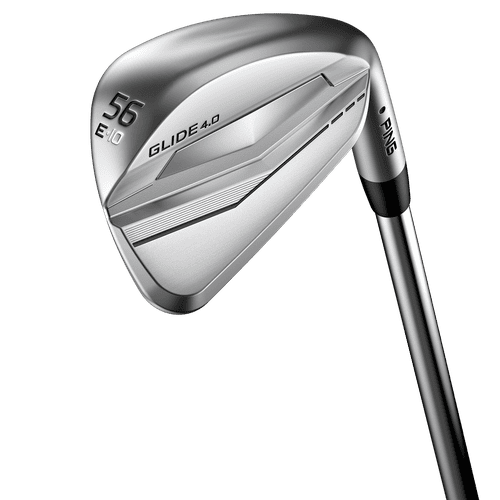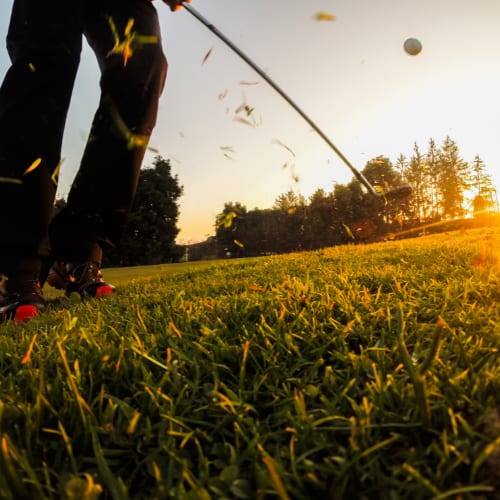The pitching wedge is an essential club for any golfer looking to develop a complete short game. Mastering the pitching wedge provides the ability to precisely execute high, soft shots that land softly on the green as well as low, running shots that utilize the bounce of the club. Compared to other wedges, the pitching wedge features a moderate loft, typically between 44-48 degrees, which allows the wedge to be versatile depending on the type of shot the player needs.
This article will explore best practices for hitting effective pitching wedge shots. We will cover proper setup and positioning to promote consistency. The goal is to offer actionable tips from my own experience to help you lower scores by getting up and down more frequently.
Mastering your pitching wedge can lead to better golf and help you hole more shots or at least get closer to save critical strokes. By sticking to core principles and straightforward instructions provided here, golfers of all abilities can make substantial progress in this specialized area of the game.
- 1) What is a Pitching Wedge?
- 2) Proper Setup and Grip
- 3) The Pitching Wedge Swing
- 4) Precision and Finesse Shots
- 5) Practice Drills and Training Aids
-
6)
Frequently Asked Questions
- 6.1) How far should I expect to hit my pitching wedge?
- 6.2) What type of situations call for using a pitching wedge?
- 6.3) What grip should I use with a pitching wedge?
- 6.4) How much wrist action should there be?
- 6.5) What causes fat or thin shots?
- 6.6) Should my stance width be narrower?
- 6.7) Pitching vs. sand wedge around greens?
- 7) Final Thoughts
What is a Pitching Wedge?

A pitching wedge offers a happy medium between a sand wedge and a 9 iron. It bridges the yardage gap that often exists between those two clubs, filling a vital role for distance control on approach shots between 80-130 yards. The moderate loft on a pitching wedge launches the ball high enough to hold firm greens while still providing enough distance to cover long holes into par 4s and 5s.
Unlike more lofted wedges, the pitching wedge can be used effectively from a variety of lies, including fairways, light, rough and tight lies.
Check Also: 12 Best Wedges for High Handicappers – Reviews & Guide
Proper Setup and Grip
Proper setup is vital for consistent pitching wedge shots. You should use a narrow, open stance with the ball positioned forward, close to their left arch (for right-handed players).
In addition, weight should be evenly distributed between both feet. A neutral or slightly strong grip works well for most pitch shots. Maintaining smooth acceleration requires lighter grip pressure through the pitching motion.
The Pitching Wedge Swing

Executing a sound pitching wedge swing requires ingraining key fundamentals. The motion should feel compact yet explosive through the hitting zone. Solid contact stems from efficient sequencing of the backswing, transition, downswing, and follow-through.
Backswing
The backswing sets the tone for the entire motion, so keeping it smooth and synchronized is vital. You should make a modest shoulder turn while lifting the club using your arms and hands.
Avoid overswinging or letting the club get too far behind with pitching wedges as this reduces control. Most of the backswing power will be generated through rotation as opposed to a steep vertical lift with the arms.
Transition and Downswing
The transition refers to the motion of shifting from backswing to downswing. Weight should move onto the front foot while rotating through the hips and core area. Creating separation between the upper and lower body prior to impact promotes both power and consistency. The downswing itself needs to stay compact and on plane to strike the ball solidly.
Excess sliding or swaying often lowers centeredness and balance. Let the club naturally release and accelerate through impact without consciously cutting across too sharply.
Follow Through
Upon contact, the body should fully release with hips clearing out of the way. You should resist the urge to decelerate the club letting it wrap up over your shoulder. This extended follow-through allows the proper flight and direction to materialize.
Balance should remain steady from start to finish. In particular, maintaining posture throughout the entire pitching motion ensures optimal results.
Precision and Finesse Shots

One of the main benefits of the pitching wedge is the ability to hit delicate finesse shots with great precision. The moderate loft and bounce make it possible to vary trajectory and spin based on the type of shot attempted. Executing these specialty shots provides golfers with creative options around the green.
High Trajectory Pitch Shots
When facing a front pin location or obstacle in front of the green, it becomes necessary to pitch the ball high and soft. To increase height, position the ball slightly back with 70% weight favoring the rear foot at setup. Make a smooth backswing staying connected and letting the wrists hinge naturally.
The downswing should accelerate through impact as the body clears out of the way. Creating lag and releasing the clubhead upward produces the ideal high, arcing ball flight.
However, for maximum stopping power and grip on the green, consider incorporating backspin into your high trajectory shots. Learn how to generate controlled backspin with every shot by reading our guide on how to put backspin on a golf ball.
Knockdown Pitch Shots
Conversely, knockdown pitch shots employ a more downward blow to keep the ball beneath the wind. These low shots skip and scoot towards the target making them a reliable option from tight lies.
To execute these shots properly, use a narrow stance with the ball up near the front foot. Make sure to lean the shaft forward at address. The swing itself should feel almost like a punch featuring minimal wrist break and early releasing for a slight descending blow.
To reduce spin, try positioning hands even more forward at impact. Practice both specialty shots to handle various short-game scenarios.
You May Also Like: How to Hit Out of the Bunker – Sand Trap Tips for Beginners
Practice Drills and Training Aids
Implementing productive practice drills using alignment rods, landing zones and other training tools will engrain sound pitching technique. These aids provide feedback, measure progress and build muscle memory for wedges.

Alignment Rod Drill
Alignment rods placed right outside the ball line in the intended start direction serve multiple purposes. Firstly, they guide proper setup alignment and aim. Secondly, they indicate swing direction providing instant feedback.
Finally, rods show face angle and swing path issues that cause wayward shots. As you perform repeated reps, rods help develop improved impact factors.
Landing Zone Drill
Marking specific landing zones or targets at various yardages lets you practice precise distance control. Pitching to a 30-yard circle, then 50, then 80-yard rings ingrains the feel for dialing in trajectories and force moderation.
Constantly landing wedges into prearranged zones breeds confidence in executing approaches into real greens.
No Waggle Drill
The waggle refers to extra practice movements prior to initiating the actual backswing. Limiting or eliminating the waggle places focus on the correct tempo and transition.
After taking your grip, immediately begin the backswing and motion. This drill trains better rhythm while reducing extraneous elements within the swing. Develop proper sequence before worrying about full, perfect swings. Grooving the core motion takes priority early on.
Frequently Asked Questions
Mastering the pitching wedge requires understanding some common areas of concern. Here are answers to some of the most frequently asked questions about pitching wedge technique, use, and best practices:
How far should I expect to hit my pitching wedge?
Pitching wedge distance typically ranges between 90-130 yards based on the player’s swing speed and ability. More powerful golfers can achieve 140+ yards with aggressive swings while beginners might max out below 100 yards.
What type of situations call for using a pitching wedge?
Pitching wedges work well for shorter approach shots into par 4s and 5s. They also shine when facing tricky lies in the rough or awkward distances just outside sand wedge range. Riskier full shots sometimes require substituting a reliable pitching wedge instead.
What grip should I use with a pitching wedge?
The best pitching wedge grip allows you to hinge and unhinge your wrists smoothly during the swing. A neutral or slightly strong grip generally offers suitable wrist functionality. Avoid gripping too tightly as it reduces feel and finesse.
How much wrist action should there be?
Pitch shots rely more on body rotation driving the arms for power. But some wrist hinge on the backswing sets the proper geometry to strike cleanly. Let the wrists naturally release just past impact without manipulating the face angle.
What causes fat or thin shots?
Fat shots often stem from swaying laterally rather than turning against a firm front side. Thins result when weight falls backward or the club bottoms out early due to over-rotation.
Should my stance width be narrower?
Yes, feet should align closer together for most pitch shots to assist balance and efficient core movement. However, some players utilize their normal iron stance width without issues.
Pitching vs. sand wedge around greens?
Sand wedges feature added loft helpful on soft lies or steep contacts. Pitching wedges work best on tighter lies requiring cleaner turf interaction. Evaluate conditions before choosing one over the other.
Final Thoughts
Mastering the pitching wedge provides golfers with a versatile scoring weapon from inside 130 yards. Its moderate loft blends accuracy and soft landings on approach shots. Solid contact requires ingraining proper setup, grip, swing mechanics, and specialty finesse abilities.
Dedicated practice using alignment aids, landing targets, and specialized drills improves wedge skill and confidence. Precisely executed pitches that fly high and then land softly or sweep along the grass can set up easier putts for lower scores. Developing a vision to hit exact yardages while contending with various lies and wind conditions separates the best short-game performers.
Golfers often encounter swing flaws that hinder distance control and accuracy. One such issue is hitting the ball fat, which means making contact with the ground behind the ball at impact. This can lead to weak, smothered shots that fall short of the target. To learn how to eliminate fat shots and achieve crisp contact, check out our guide on how to stop hitting the ball fat.
We hope this article managed to provide everything you need to perfect your pitching game. If you still have questions or comments, please contact us.
Thanks for reading!





